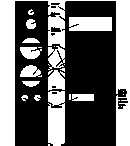The N110A can be modified to use the 066 or the 044 with excellent results. Both are quite a bit better than the cheaper 033 with the 066 having "better" overall frequency response that extends higher while the 044 has lower power compression and greater power handling. Plus, the 044 doesn't have the "18 kHz" anomaly numerous 066's "suffered" from.
The N212 network shows the minute change in the HF conjugate to use the 066. To use the 044 one has to change C5 to 14.0uF.
As an aside, the L110A was the first JBL loudspeaker to employ bypass capacitors.



 Reply With Quote
Reply With Quote



 ).
).



